I didn’t get a chance to share many of the great bonsai I saw in Japan this past winter and thought now would be a good time for it. We can start with some junipers from Kimura’s garden.
The shimpaku below is a great example of a well-balanced bonsai. The trunk starts by moving up and to the right, the middle section and the key branch move to the left, and the apex moves back to the right. Despite the back and forth, the tree appears stable. The tree’s key feature is a round lifeline affixed to a ribbon of deadwood that twists and meanders from soil to apex. It’s a beautiful work.
Informal upright shimpaku bonsai
The shimpaku below has a very different feeling. It’s more powerful – the thick base and twin lifelines account for this – and more simple. Like the shimpaku above, however, it is an informal upright bonsai. Together, these trees provide very different approaches to the style.
Powerful informal upright shimpaku
Let’s look at a third example. Two lifelines and very dramatic deadwood are the key features of the shimpaku below. The deadwood at the base of the trunk is interesting. It starts to the left before doubling back and forming a complete circle from which the trunk rises with more subtle curves – and lots of complex deadwood – to the top of the tree. Whereas the tree above has a solid block of foliage sitting atop the deadwood, the tree below has pads of foliage arranged around the deadwood – a good way to highlight the tree’s key feature.
Informal upright shimpaku
The shimpaku juniper below slants to the left. The trunk moves from right to left as does the key branch, though a small block of foliage in the very front of the key branch suggests left to right movement. The lifeline visually anchors the composition and provides good counter balance for the left-leaning elements.
Slant-style shimpaku bonsai
The juniper below is one of the more famous trees in the garden. It looks fantastic from most angles as the deadwood and movement are spectacular. The foliage is currently a single block with little division between individual branches.
Awesome shimpaku bonsai – one of Kimura’s finest
I’ll be curious to see if the foliage changes over time. Since bonsai deadwood typically stays put, the foliage – apart from the planting angle and the pot itself – is the main element that we expect to change as bonsai develops. And as juniper foliage is typically divided into blocks, I look forward to seeing what’s in store for this awesome specimen.
Subscribe to Bonsai Tonight
New Posts Delivered Every Tuesday and Friday
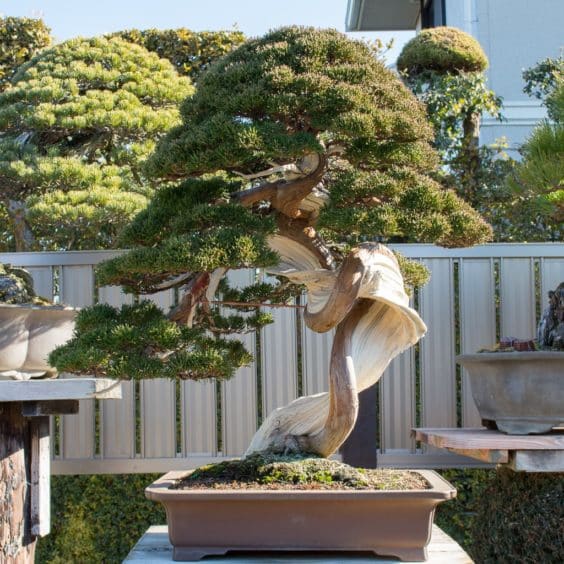
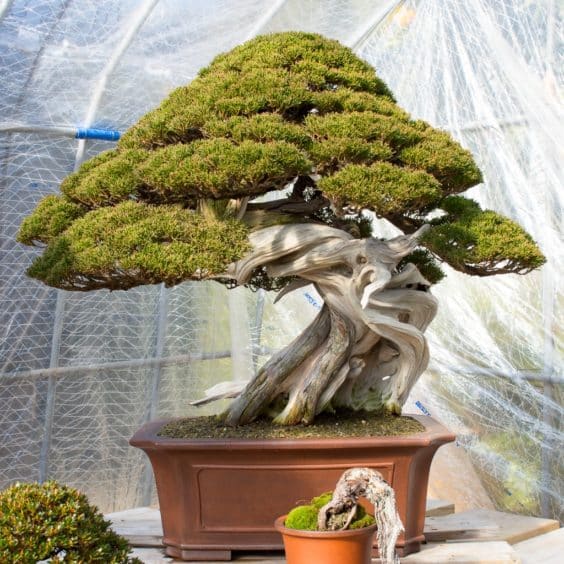
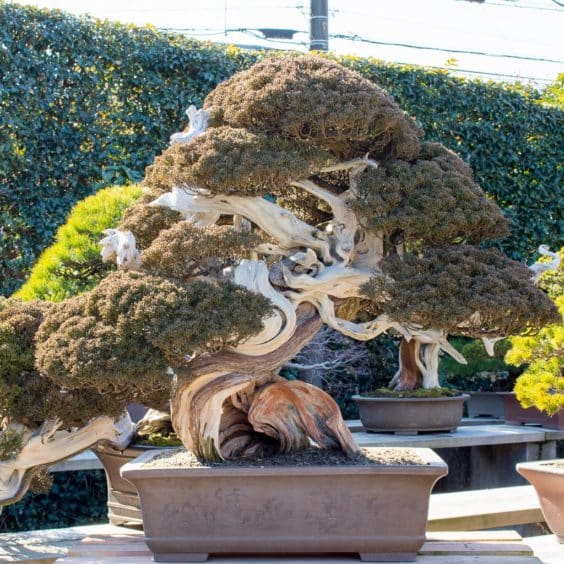
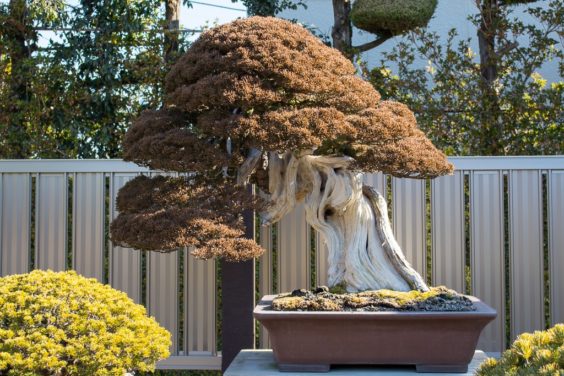
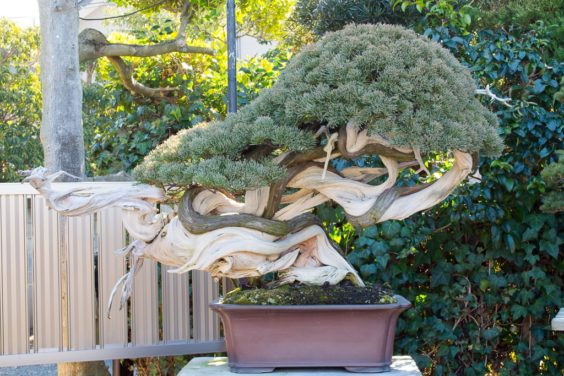
Edward Stanton says
Jonas, Splendid trees and splendid photos. As always your comments are apt and to-the-point. A question: what does Kimura (or you) recommend to heighten the sheen of the lifelines on Shimpakus?
Thanks,
Ed
Jonas Dupuich says
Hi Ed – good question. I don’t know what exactly Kimura does ahead of exhibits, but it’s common to peel away the outer layers of bark and/or brush it to bring out the red color. Oiling the lifeline can be a bit much. If oil is to be used, I like it best when it’s used long enough before the exhibit for the sheen to dull a bit.
Greg Brenden says
Like…
Andy Brokenshire says
Why is the foliage on some of them brown? They look dead. Are they?
Jonas Dupuich says
Good question Andy – Chinese junipers commonly turn brown when left in the cold during winter. They green up again in fall.